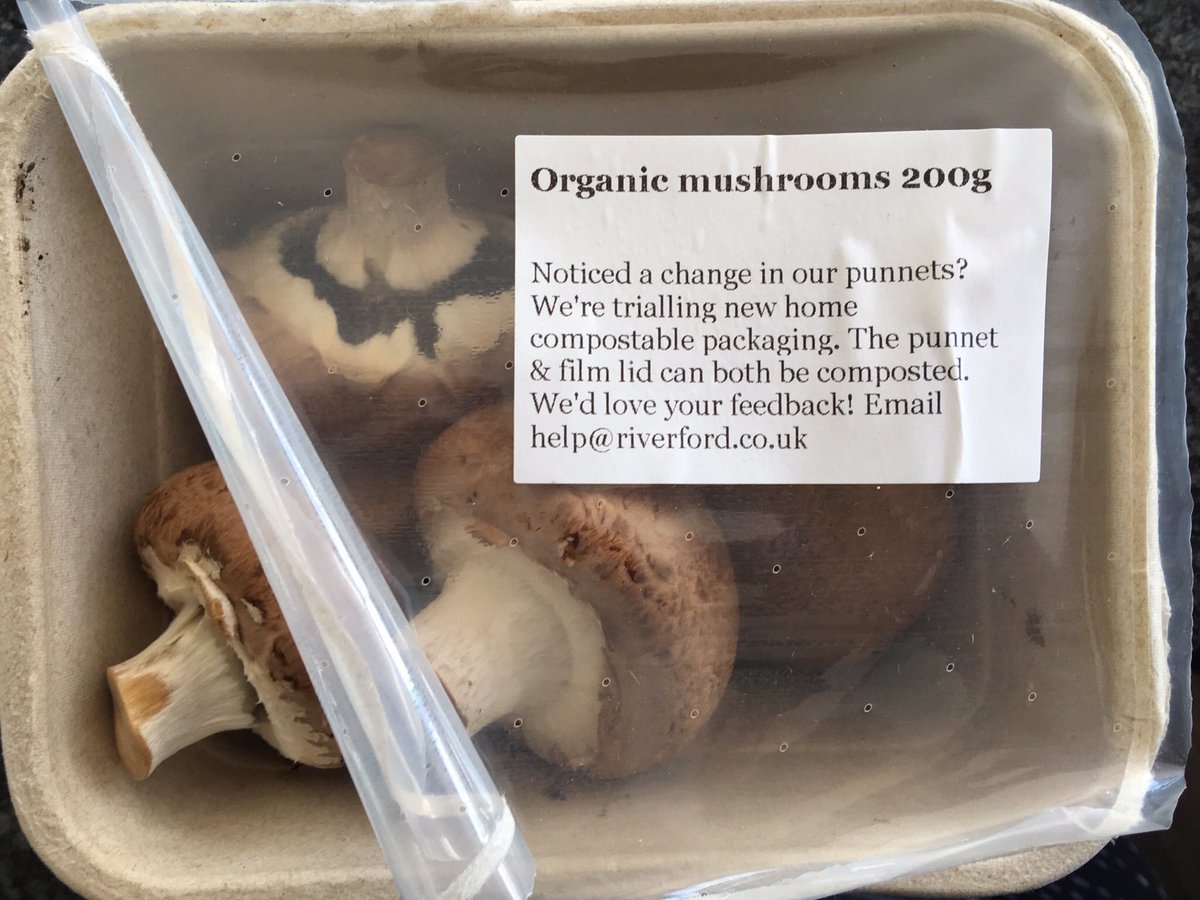Wicked Leeks spoke to Robyn Copley-Wilkins, the packaging expert at organic veg box company Riverford, for her insight into the world of home compostable:
What is home compostable packaging?
Home compostable packaging is derived from renewable, raw materials that are sustainably sourced. It includes things like punnets made from wood pulp, nets made from beech trees, and cellulose from trees used to make a plastic-like film. They break down quickly (within 12 weeks) and completely at low temperatures within home environments.
Where can I compost these materials?
Home environments such as compost heaps and food waste bins are ideal. Many home compostable plastics are even certified to completely break down in marine environments, so they won’t cause harm if they do mistakenly end up in the ocean.
I don’t have a compost heap at home, what are the alternative options?
Some councils will take back compostable plastics in food waste bins. Alternatively, if you are a Riverford customer, you can send it back with your box to be composted on the farm.
What is the difference between home compostable and biodegradable plastic?
There are many different types of biodegradable plastic on the market, and some are worse for the environment than conventional. As well as being non-recyclable, they require high temperatures to break down, meaning they don’t biodegrade if they end up in landfill or in the ocean. Home compostable plastic is different. It’s made from renewable raw materials and breaks down at low temperatures.

Why is it still called ‘plastic’?
Riverford is trialling a home compostable film on some mushroom punnets, before rolling it out to other products. This new material has a plastic-like quality in terms of its strength and ability to prevent moisture loss. The term home compostable plastic is designed to reflect the qualities required in the material, as well as the environmental aspects.
How do you know home compostable packaging breaks down entirely?
At Riverford, we tested home compostable plastic in a wormery. Within eight weeks, the packaging had been completely digested by the worms who are now living out their lives in someone’s garden compost bin. See video below.
Why use home compostable plastic over cardboard?
Produce such as mushrooms and berries are sensitive to moisture loss. Although using a cardboard sleeve to seal mushroom punnets protects them during transportation, they start to dehydrate quickly and can appear shrivelled. Using a sealed punnet with home compostable plastic allows a longer shelf life without compromising on the environmental impact.
What are the issues with home compostable plastic?
The base materials for some home compostable packaging aren’t renewable. Riverford will only use home compostable plastic made from sustainable, non-GM and, where derived from trees, FSC-accredited materials. Compostable materials can also lead to increases in littering. It’s all about communication, clear labelling on packaging, and spreading the word that home compostable packaging does what it says on the tin.
Where does Riverford currently use home compostable packaging?
We are trialling new wood pulp punnets and compostable film on mushrooms, and will be rolling this out to other products such as berries. Leafy veg and salad requires some plastic packaging to make sure it lasts without wilting, but we will be switching all remaining plastic in our veg boxes to home compostable alternatives by the end of 2020. Switching from plastic to beech wood nets on our citrus and onions has already saved us 180km of plastic a year. We already use roughly a quarter of the plastic packaging used by supermarkets on equivalent organic fresh produce, thanks to packing vegetables as loose wherever possible.












Surely better to call it home compostable cellulose film? Why call it plastic?
HI Annonie, I will pass your feedback on – thanks for contributing.
Excellent new packaging. If you can do this, why can’t the big supermarkets ?
It isn’t a cheap option to develop or use this new type of packaging, but it is a more sustainable solution – hopefully others will follow suit as people demand more from supermarkets.